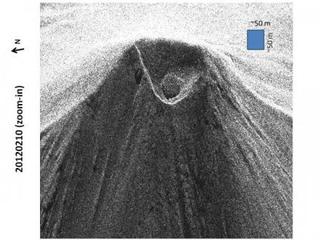Seismic Stations Pick Up Cleveland Blast

Thursday, March 08 2012
Cleveland Volcano has blown its top again. An explosion shook the restless Aleutian volcano at around 7 o’clock Wednesday night. There’s no monitoring network on the volcano itself, but seismic stations as far away as Dillingham picked up the signal.
Alaska Volcano Observatory seismologist Steve McNutt says that like a similar explosion in December, Wednesday’s was relatively small.
“They were strong enough to generate a healthy signal that showed up on our instruments, but in terms of what Cleveland has done in the past, they’re relatively small.”
McNutt says the explosion likely destroyed a lava dome that had been forming in Cleveland’s crater for several weeks.
“The dome is sort of a thick, pasty lava flow. It’s like peanut butter, it’s kind of thick and pasty. It’s not runny and fluid like Hawaii, that’s why it makes that sort of rounded, dome-shaped feature. But it is molten rock. So what we think happens is it plugs up its own vent and then gases continue to escape out of solution underneath it and eventually you get to a point where the gas pressure high enough that the gas pressure trying to escape is stronger than the strength of the magma to hold it in.”
McNutt says cloudy conditions since the explosion have kept the Observatory from getting a good look at the volcano’s crater. He says they also weren’t able to detect an ash cloud associated with the eruption, although there likely was one.
The blast didn’t interrupt air traffic, although Cleveland does lies on a major international flight path.
McNutt says given the Cleveland’s track record, more explosions of this kind are likely.



